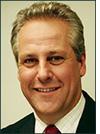The Australian Communications and Media Authority (ACMA) has cleared UHF spectrum for RFID deployments across the country, bringing Australia in line with a growing number of countries.
The ACMA, the government agency responsible for the regulation of the use radio frequencies in Australia, has issued GS1 Australia, formerly known as EAN Australia, an experimental license for the 920-926 MHz segment for RFID readers (or interrogators) transmitting 4 watts of radiated power. The experimental license hands over management of the higher power RFID readers to GS1 Australia to regulate and monitor any interference with existing RF services as part of a process leading to a full class license for 4-watt readers. GS1 Australia, a member of the global GS1 organization and the local administrator for the international EAN-UCC system, will be responsible for granting authorization to individual sites to operate under its license.
“The great news is that after about 24 months of work, we now have a frequency and power range that allows companies [deploying RFID in Australia] to move forward [with their deployments],” says Chris Adcock, president of EPCglobal, the joint venture between GS1 International and the Uniform Code Council that is charged with facilitating the adoption of EPC RFID technology. Prior to the new license, Australia had allowed UHF RFID readers to transmit at 918 to 926 MHz but restricted the maximum radiated power to 1 watt. Increasing a reader’s power to 4 watts should enable RFID tags to be read from about twice the distance compared with performance of the 1-watt readers.
For EPCglobal the new regulations add another country to the list of those that have dedicated UHF spectrum within EPCglobal’s target range for UHF RFID spectrum: 860 MHz to 960 MHz. In theory, any EPC-compliant UHF tag should be readable by any EPC-compliant interrogator operating between 860 MHz and 960 MHz. That means a single tag could be used to track a shipment around the world.
In May, India announced it had licensed 865 MHz-867 MHz for UHF RFID (India Adopts 865-867 MHz for RFID). Japan cleared 950 to 956 MHz in April, and Singapore set aside 866 to 869 MHz in November. Europe’s 46 national communications authorities voted to adopt 865 to 867 MHz (see New ETSI RFID Rules Move Forward) in September. In the United States, UHF RFID readers can operate at 902 to 928 MHz and transmit as much as 4 watts of radiated power.
Although the goal is to enable a single tag to be readable anywhere in the world, there remains some concern whether this will, in fact, be possible, given the different spectrum swathes set aside in different countries and regions. “There is little experience with this yet and some users have found there is a lack of performance with tags tuned to a specific frequency when used in a different frequency range. So there is no definitive answer now,” says Henri Barthel, technical director at EPCglobal.
By making GS1 Australia responsible for regulating companies using readers in the new spectrum and new power level, the ACMA has put GS1 Australia in a unique position. No GS1 organization around the world has been given such a responsibility before, and GS1 Australia says the ACMA reached its decision to do so after discussions with the industry body. Companies will need to apply directly to GS1 Australia for a site license for each location they wish to use 4-watt RFID readers within the 920-926 MHz frequency range. GS1 Australia will be responsible for licensing and monitoring the deployment of 4-watt RFID readers and rectifying interference problems, if any occur, between a deployed UHF RFID system and other types of RF devices, such as mobile telephones operating on Vodafone’s GSM network, which use 900 MHz spectrum adjacent to the new RFID frequency range.
GS1 Australia will keep a database of each company and site that has been granted permission to use 4-watt readers. This database will be used to help show whether or not readers interfere with other types of nearby radio devices.
The initial deployments under the experimental license is expected to lead to a full class license for 4-watt readers operating at 920-926 MHz. GS1 estimates that ACMA could issue such a class license in 2007.


